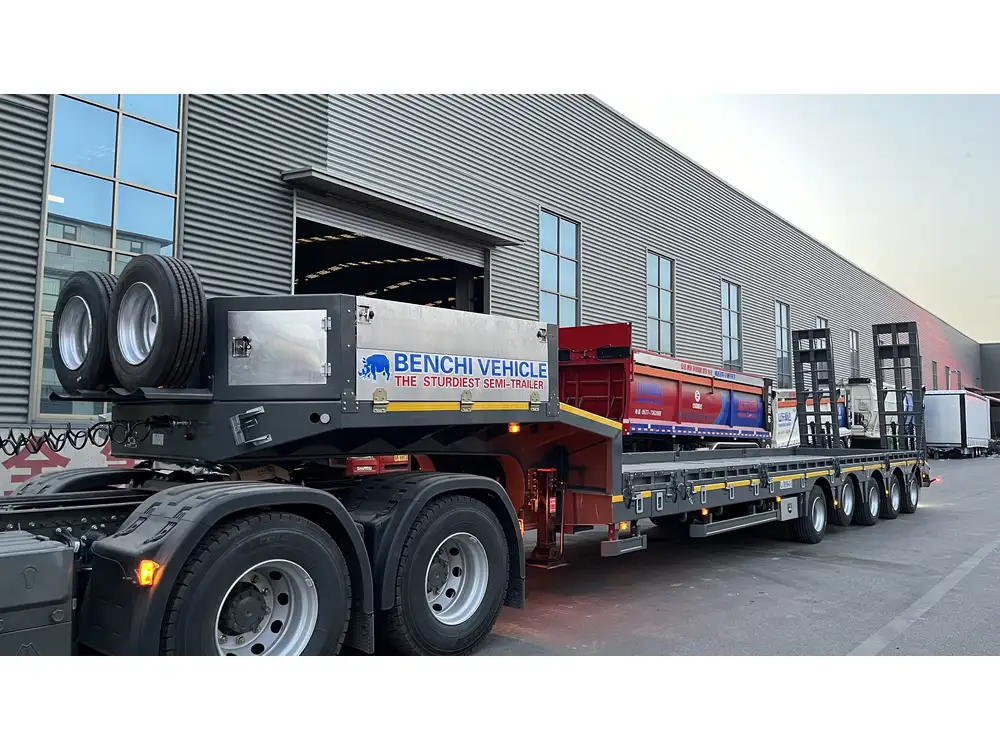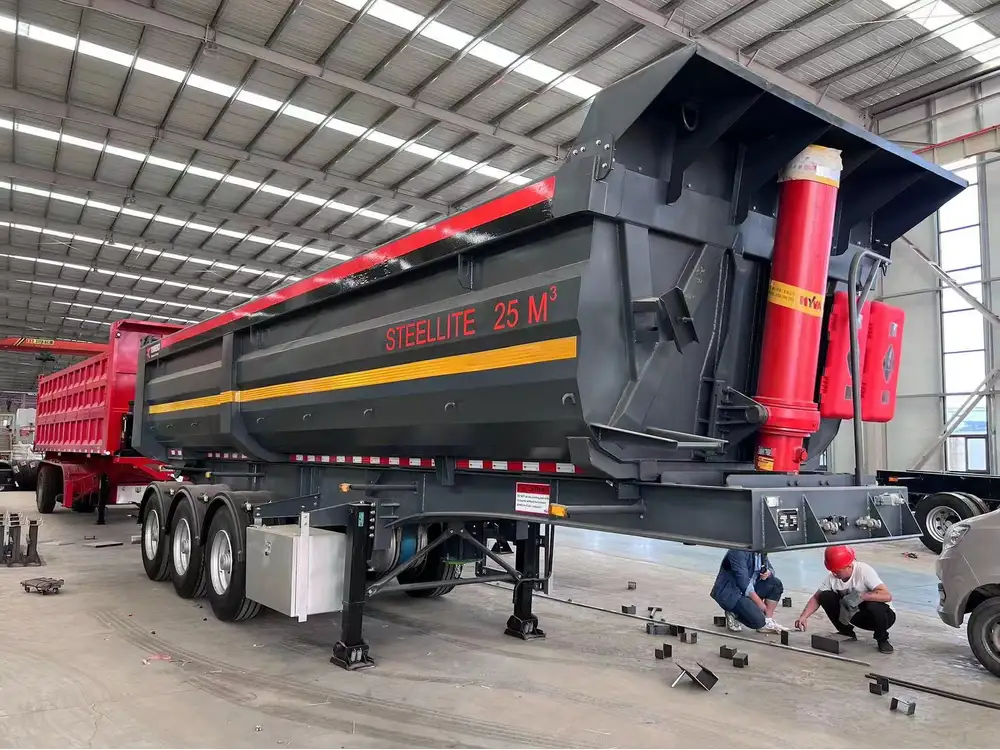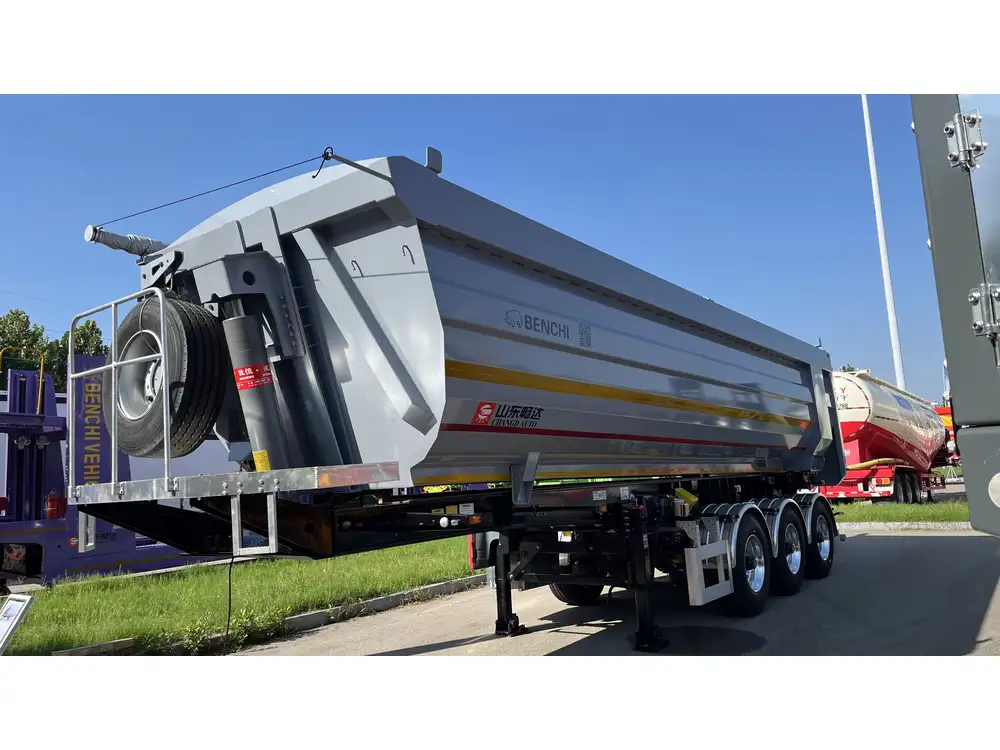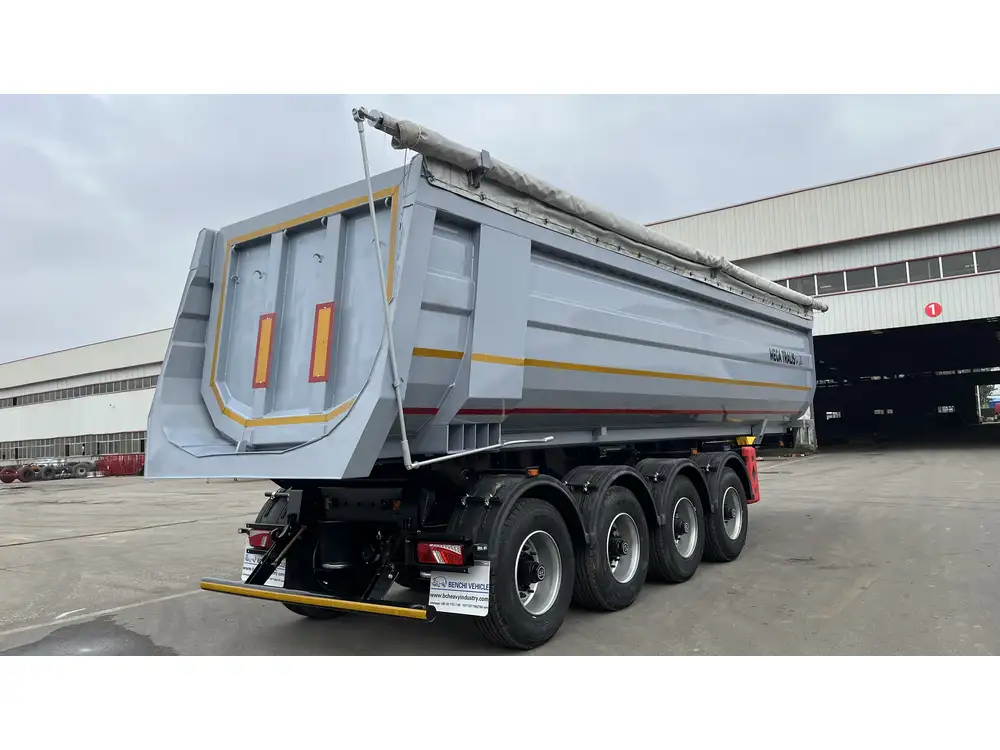Hauling a loaded semi-trailer can seem like an overwhelming task, especially for those new to the trucking industry or those looking to step up their game. Consequently, understanding the proper methods, techniques, and safety measures is crucial. This guide provides detailed insights into the best practices for hauling a loaded semi-trailer on another trailer, ensuring both efficiency and safety.
Understanding the Basics of Hauling Loaded Semi-Trailers
Before delving into the specifics of hauling techniques, it’s essential to grasp the fundamental aspects of semi-trailer hauling. The process involves using a specialized trailer, such as a flatbed or lowboy, designed to transport heavy and bulky loads. Key components to consider include:
- Weight Distribution: Properly balancing the load to prevent trailer sway and ensure safe handling.
- Trailer Specifications: Ensuring the trailer chosen can accommodate the dimensions and weight of the semi-trailer.
- Legal Requirements: Familiarizing oneself with numerical limits imposed by local jurisdictions, including weight limits on bridges and roads.
The Anatomy of a Semi-Trailer
To haul a loaded semi-trailer effectively, it’s vital to comprehend the elements that define its structure. Here’s a brief overview:
| Part | Description |
|---|---|
| Kingpin | The pivot point connecting the semi-trailer to the tractor unit. |
| Fifth Wheel | Mechanism on the tractor that locks the kingpin in place, ensuring stability during transit. |
| Axles | Wheels configured on an axle system designed to bear weight and promote even weight distribution. |
| Safety Chains | Additional security devices to prevent trailer separation in case of hitch failure. |

Regulatory Considerations
Various federal and state regulations can impact the logistics of hauling a loaded semi-trailer. These include:
- DOT Regulations: The Department of Transportation has stringent requirements regarding weight limits, trailer safety, and driver qualifications.
- Permitting: Oversized loads may require special permits, which must be secured in advance.
Essential Equipment and Tools
Proper preparation involves selecting the right equipment and tools for the task at hand. Having everything organized not only streamlines the process but also ensures safety. Key items include:
1. Heavy-duty Tow Vehicle
Investing in a heavy-duty tow vehicle capable of managing the weight of both the loaded semi-trailer and the trailer being used is critical.

2. Trailer Types
Choosing the right trailer significantly affects the success of the hauling operation. Common types of trailers suited for hauling semi-trailers include:
- Lowboy Trailers: Ideal for transporting heavy equipment, these trailers feature a low deck height for improved stability and lower center of gravity.
- Flatbed Trailers: Versatile and easy to load, flatbed trailers allow for a wide range of cargo and facilitate loading from any angle.
3. Loading Equipment
Employ the use of appropriate loading equipment such as:
- Forklifts: For moving and positioning the semi-trailer onto the trailer.
- Winches: Assist in securing loads and maintaining stability during transport.
Step-by-Step Guide to Hauling a Loaded Semi-Trailer
With equipment in hand and a thorough understanding of the basics, we can now detail the process of hauling.

Step 1: Preparing the Load
Executing a successful haul begins with adequate preparation:
- Inspect the Semi-Trailer: Before loading, ensure the semi-trailer is in good condition. Assess the brakes, tires, and structural integrity.
- Determine Weight: Weigh the combined load (semi-trailer + cargo) to ensure compliance with regulations.
Step 2: Loading the Semi-Trailer onto the Trailer
Proper loading techniques are critical. Here’s how to do it safely:
- Position the Tow Vehicle: Align the vehicle and trailer on level ground to facilitate loading.
- Use Loading Ramps: If applicable, utilize ramps for ease of access and better loading angles.
- Secure the Semi-Trailer:
- Attach the kingpin to the fifth wheel securely.
- Check that the connecting mechanism is locked in place.
Step 3: Weight Distribution
Balancing the weight is essential for safe transport:
- Adjust Load Position: Position the load such that the weight is distributed evenly across the axles. As a guideline, a balanced load helps reduce the risk of sway or jackknifing.

Step 4: Securing the Load
Utilize securement methods to ensure stability during transit:
- Strap Down: Utilize heavy-duty straps to secure the semi-trailer to the trailer. Ensure it is taut but does not deform the semi-trailer structure.
- Safety Chains: Implement safety chains as an additional containment measure, ensuring they’re crossed underneath the load.
Step 5: Conduct Pre-Trip Inspections
Perform a comprehensive pre-trip inspection before commencing your journey.
| Inspection Aspect | Checklist |
|---|---|
| Tires | Check for proper inflation and tread depth. |
| Brakes | Ensure brakes are functioning well and not worn down. |
| Lights | Confirm all lights and signals are operational. |
| Load Security | Double-check all connections, straps, and security chains. |
Step 6: Navigating the Road
With the load now secured, focus shifts to safety on the road:
- Drive Smoothly: Avoid harsh acceleration and abrupt stops, which can cause jerky movements and shift the load unexpectedly.
- Monitor Speed: Adhere to speed limits, especially when carrying oversized or heavy loads.
- Maintain Distance: Increase following distance to allow ample time for stopping.

Important Tips:
- Utilize route planning applications to avoid restricted roads to heavy loads.
- Keep a close watch on weather conditions, as adverse weather can significantly impact driving performance.
Common Issues and Resolutions
Despite thorough preparation, issues may still arise. Here are several common problems and solutions for the hauling process:
Problem 1: Load Shifting
Solution: Regularly check load tightness and adjust securing mechanisms as needed.

Problem 2: Difficulty in Maneuvering
Solution: Train drivers on techniques for maneuvering longer vehicles in confined spaces.
Problem 3: Regulatory Compliance
Solution: Keep up-to-date with local, state, and federal regulations regarding hauling loads.
Conclusion
Successfully hauling a loaded semi-trailer on a trailer is not a task to be taken lightly. It requires meticulous preparation, awareness of existing regulations, and critical attention to detail throughout the entire process. By following the outlined steps, utilizing the right equipment, and proactively addressing potential issues, you’ll ensure a safer and more efficient hauling experience.
When equipped with knowledge, commitment, and the right training, the journey can not only become manageable but also vastly rewarding. Continue optimizing your processes and staying informed about industry best practices to maintain an edge in the trucking business.



